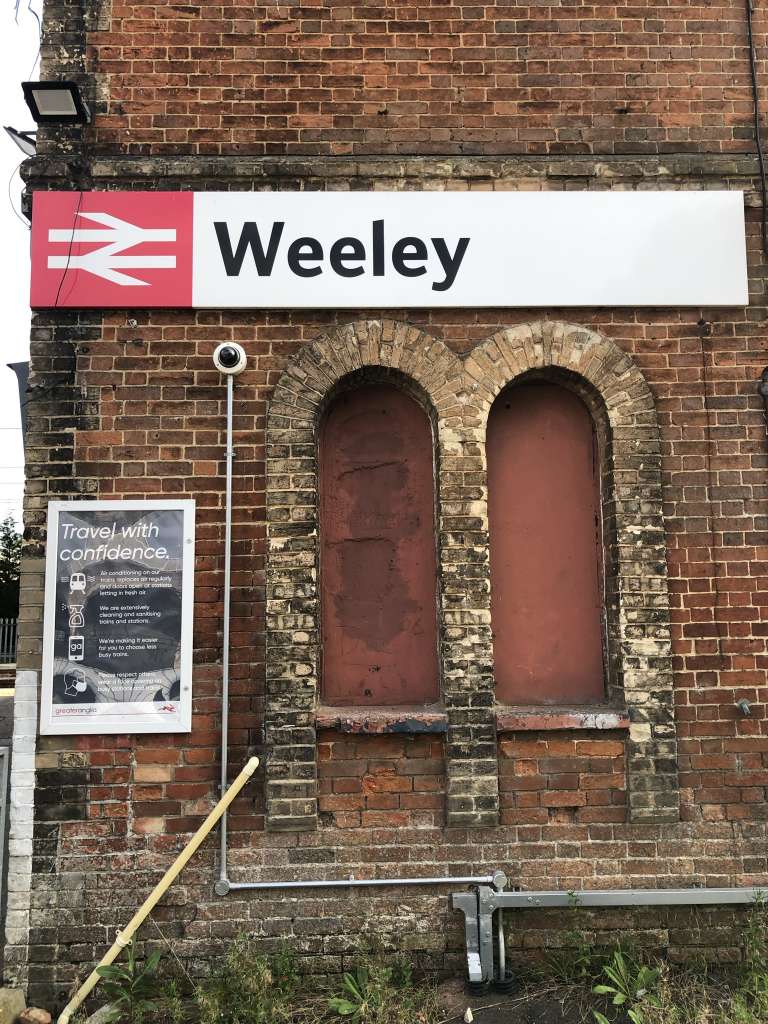SAVE mounts campaign to rescue Victorian Essex station
9th October 2021
SAVE Britain's Heritage has submitted an application to list the Victorian station house at Weeley Station on Essex's historic Tendring Line from Colchester to Walton, which is threatened with demolition by train operator Abellio Greater Anglia
Our application submitted to Historic England to assess Weeley for listing includes evidence shedding light on its significant historic and architectural associations.
Weeley was built by the noted railway engineer Peter Bruff to designs by prolific station architect Frederick Barnes and shares a distinctive architectural language with the contemporaneous stations at Alresford and Great Bentley, which are also unlisted and in the demolition sights of Abellio Greater Anglia. Many original architectural details survive at Weeley, including ornate curved brick window dressings, protruding central dormer windows on either side and an unusual pergola waiting shelter facing the platform.
Weeley is one of four stations built by the Great Eastern Railway when it extended the Great Eastern Mainline from Colchester to Walton-on-the-Naze on the Essex Coast in 1866. Despite surviving the Beeching cuts of the 1960s, Weeley’s station building, which originally housed a waiting room and ticket office, has been left empty and neglected for years by the station’s current leaseholder Abellio Greater Anglia, who gained approval in July 2021 to demolish it for a new shelter under permitted development rights.
Peter Schuyler Bruff (1812 – 1900) was a prolific railway and civil engineer who worked on many of the important railways built in East Anglia during the mid-19th century, including the Waveney Valley line in Norfolk, the Eastern Union Railway (of which Bruff was the company founder), the Ipswich and Bury Railway and the Sudbury branch of the Eastern Counties Railway.
The latter line is carried across the grade II listed Chappel viaduct over the Colne Valley in Essex, which Bruff engineered between 1847 and 1849. Standing 80 feet (24m) above the river, the viaduct has 32 arches constructed from 4.5 million bricks and is 1,066 feet (325m) long and remains a monument of the railway age of high national significance.
Noted Ipswich architect Frederick Barnes (1814–1898) designed many stations across East Anglia’s burgeoning railway network, including stations on the Ipswich, Bury & Norwich Railway, the Eastern Counties Railway and the Waveney Valley Line in Norfolk. Notable surviving examples include the grade II* listed station at Bury St Edmunds in Suffolk and the grade II listed stations at Stowmarket and Needham Market.
Barnes was commissioned for many of these projects by Peter Bruff, affirming an important working partnership between the two that was both successful and long running.
The construction of Weeley and the Tendring Line itself was crucial in initiating a period of historically important growth in the region, allowing the once small fishing villages of Walton-on-the-Naze and Clacton on Sea to be transformed into popular Victorian seaside resorts.
Whilst we await the outcome of the listing application, was are looking into options to secure a new use for the building in the long term.
ENDS
Note to editors
1. For more information and images contact Ben Oakley, Conservation Officer at SAVE Britain's Heritage: oakley@savebritainsheritage.org/ 020 7253 3500.
2. SAVE Britain’s Heritage has been campaigning for historic buildings since its formation in 1975 by a group of architectural historians, writers, journalists and planners. It is a strong, independent voice in conservation, free to respond rapidly to emergencies and to speak out loud for the historic built environment.
3. See here for details of our latest campaigns.






